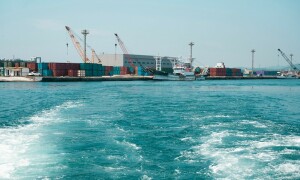China has cautioned its peers against any hasty implementation of safeguard mechanisms to restrict its booming textile exports, warning such measures would run counter to free trade principles. Following the end of quotas regulating the global apparel trade, Chinese textile exports to the United States in January jumped 65 percent, highlighting concerns China would benefit most from the end of the quota system.
Similarly, to Germany, the European Union's biggest buyer of Chinese textiles, exports rose 46 percent, part of a total gain of 28 percent in the month as China built on increases of over 35 percent in both 2003 and 2004.
The spike in exports has already resulted in calls from Brussels and Washington for "safeguard" mechanisms, which under World Trade Organisation (WTO) rules would allow for new limits on specific Chinese goods.
"The reason that they removed the quotas on January 1 was so that trade can be freer so to go back and put more restrictions on trade is going against the free trade that everyone wants," Sun Huaibin, spokesman for the China National Textile Council, told AFP.
"You have to look at the overall trends; you can't implement new quotas just months after lifting them."
China's products are competitive on the world market as they offer good value to consumers, Sun said, so based on this principle they should continue to enjoy access to global markets under WTO rules.
China, which is concerned about creating jobs for its 1.3 billion people, has also taken measures - such as a recently implemented export tax and new regulations on issuing export permits - in an effort to ensure that no destabilising surges in Chinese exports hit global markets, he said.
In his address to parliament on March 5, Premier Wen Jiabao set China's total export growth target for 2005 at 15 percent, apparently reflecting concerns from the US and EU over the expected increase in textile exports.
The January 1 lifting of import quotas with the ending of the 1974 Multi-Fiber Arrangement (MFA) had been expected to produce a sharp increase in textile exports from powerhouses China and India at the expense of smaller producers in developing countries such as Bangladesh, Cambodia and Vietnam. Both the EU and the US have also voiced concerns over job losses in their own textile industries.
US textile and apparel makers called Friday for action by Washington to stem Chinese imports, saying American industries were being devastated by the lifting of quotas.
"China is more and more becoming a market economy; now the EU and the US want to turn this around and go back to government intervention," Dean Spinanger, senior fellow at Germany's Kiel Institute for World Economics, told AFP.
"The WTO is for freer trade, certainly in principle. For the EU and the United States to immediately step on the brakes to stop the flow of Chinese exports is abominable," he said.
Besides imposing new import quotas on Chinese textiles, the EU and the US would also likely slap "anti-dumping measures" or import restrictions on Chinese products that are deemed to be "dumped" in other trading partner markets at prices below cost, he said.
However, any safeguard mechanisms will not be totally successful in protecting jobs in Europe and the United States as production could move to other South-eastern Asian countries if new limits are put in place, he added.
"This problem is not a new problem but a part of an overall market process," said Lu Tong, a researcher at the International Economy and Organisation Research Institute of the China Academy of Social Sciences.
"The Chinese government is watching this closely but Chinese textiles are very competitive on the global market, so the government is not going to take any measures interfering with this."
BR100
12,702
Increased By
113.8 (0.9%)
BR30
38,258
Increased By
378.2 (1%)
KSE100
118,383
Increased By
1067.8 (0.91%)
KSE30
36,395
Increased By
278.8 (0.77%)






















Comments
Comments are closed.